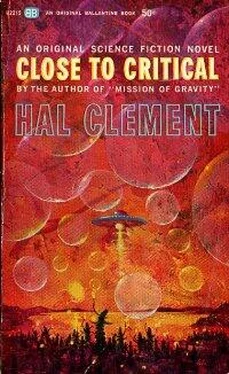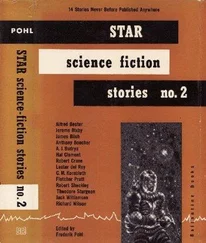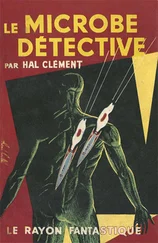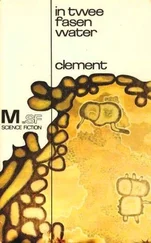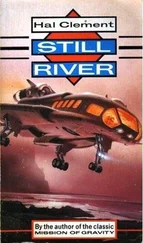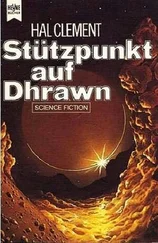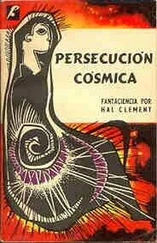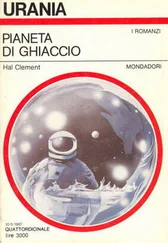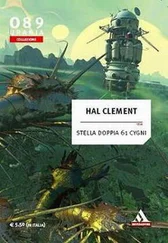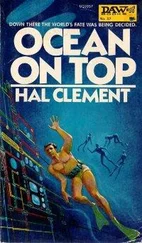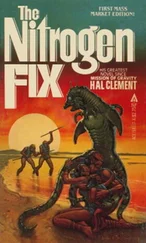A far more interesting event was the appearance of animal life. Most of the creatures were small, but were none the less fascinating for that, if the robot’s actions meant anything. It examined everything that appeared, as closely as it possibly could. Most of the creatures seemed to be scale-armored and eight-limbed; some appeared to live on the local vegetation, others, on each other.
With the harness finally gone, the attention of the robot’s operators was exclusively occupied by the animals for a long time. The investigation was interrupted a number of times, but this was due to loss of control rather than distraction. The lack of visible surface features on Tenebra had prevented the men from getting a very precise measure of its rotation period, and on several occasions the distant ship “set” as far as the important part of the planet was concerned. Trial and error gradually narrowed down the uncertainties in the length of Tenebra’s day, however, and the interruptions in control finally vanished.
The project of studying a planet three times the diameter of Earth looked rather ridiculous when attempted with a single exploring machine. Had that been the actual plan, of course it would have been ridiculous; but the men had something else in mind. One machine is not much; a machine with a crew of assistants, particularly if the crew is part of a more or less world-wide culture, is something very different. The operators very definitely hoped to find local help—in spite of the rather extreme environment into which their machine had fallen. They were experienced men, and knew something of the ways of life in the universe.
However, weeks went by, and then months, with no sign of a creature possessing more than the rudiments of a nervous system. Had the men understood the operation of the lensless, many-spined “eyes” of the local animals they might have been more hopeful; but as it was most of them grew resigned to facing a job of several lifetimes. It was sheer chance that when a thinking creature finally did turn up it was discovered by the robot. Had it been the other way around—if the native had discovered the machine—history could easily have been very different on several planets.
The creature, when they did see it, was big. It towered fully nine feet in height, and on that planet must have weighed well over a ton. It conformed to the local custom as regarded scales and number of limbs, but it walked erect on two of the appendages, seemed not to be using the next two, and used the upper four for prehension. That was the fact that betrayed its intelligence; two long and two shorter spears, each with a carefully chipped stone head, were being carried hi obvious readiness for instant use.
Perhaps the stone disappointed the human watchers, or perhaps they remembered what happened to metals on this planet and refrained from jumping to conclusions about the culture level suggested by the material. In any case, they watched the native carefully.
This was easier than it might have been; the present neighbourhood, many miles from the original landing point, was a good deal rougher in its contours. The vegetation was both higher and somewhat less brittle, though it was still virtually impossible to avoid leaving a trail where the robot crawled. The men guessed at first that the higher plants had prevented the native from seeing the relatively small machine; then it became apparent that the creature’s attention was fully occupied by something else.
It was traveling slowly and apparently trying to leave as little trail as possible. It was also making allowance for the fact that to leave no trail was not practicable; periodically it stopped and built a peculiar arrangement consisting of branches from some of the rarer, springy plants and the sharp stone blades which it took hi seemingly endless supply from a large leather sack slung about its scaly body.
The nature of these arrangements was clear, after the native had gotten far enough ahead to permit a close inspection. They were booby traps, designed to drive a stone point into the body of anything attempting to follow hi the creature’s footsteps. They must have been intended against animals rather than other natives, since they could easily be avoided merely by paralleling the trail instead of following it.
The fact that the precaution was being taken at all, however, made the whole situation extremely interesting, and the robot was made to follow with all possible caution. The native traveled five or six miles in this fashion, and during this time set about forty of the traps. The robot avoided these without trouble, but several times tripped others which had apparently been set earlier. The blades did no harm to the machine; some of them actually broke against the plastic. It began to look as though the whole neighborhood had been “mined,” however.
Eventually the trail led to a rounded hill. The native climbed this quickly, and paused at a narrow gully opening near the top. It seemed to be looking around for followers, though no organs of vision had yet been identified by the human watchers. Apparently satisfied, it drew an ellipsoidal object from its sack, examined it carefully with delicate fingers, and then disappeared into the gully.
In two or three minutes it was back, this time without its grapefruit-size burden. Heading down the hill once more, it avoided with care both its own traps and the others, and set off in a direction different from that of its approach.
The robot’s operators had to think fast. Should they follow the native or find out what it had been doing up the hill? The former might seem more logical, since the native was leaving, and the hill presumably was not, but the second alternative was the one they chose. After all, it was impossible for the thing to travel without leaving some sort of trail; besides, night was approaching, so it wouldn’t get far. It seemed safe to assume that it shared the characteristic of Tenebra’s other animal life, of collapsing into helplessness a few hours after nightfall.
Besides, looking at the hilltop shouldn’t take too long. The robot waited until the native was well out of sight, and then moved up the hill toward the gully. This, it turned out, led into a shallow crater, though the hill bore no resemblance to a volcano; on the crater floor lay perhaps a hundred ellipsoids similar to that which the native had just left there. They were arranged with great care in a single line, and except for that fact were the closest things to loose stones that the men had yet seen on Tene-bra. Their actual nature seemed so obvious that no effort was made to dissect one.
At this point there must have been a lengthy and lively discussion. The robot did nothing for quite a long time. Then it left the crater and went down the hill, picked its way carefully out through the “mine field” on the trail of the native, and settled down to travel.
This was not quite as easy as it would have been in the day time, since it was starting to rain and visibility was frequently obstructed by the drops. The men had not yet really decided whether it was better, hi traveling at night, to follow valleys and remain submerged or stick to ridges and hilltops so as to see occasionally; but hi this case the problem was irrelevant. The native had apparently ignored the question, and settled for something as close to a straight line as it could manage. The trail ran for some ten miles, and ended at a clearing before a cave-studded cliff.
Details could not be seen well. Not only was the rain still falling, but the darkness was virtually absolute even to the pickups of the robot. More discussion must have resulted from this; it was two or three minutes after the machine’s arrival at the clearing that its lights went on and played briefly over the rock.
Читать дальше
